A Talk with Digital Artist Yann Oehl on AI in the Visual Arts
Yann Oehl met with Cable Street’s Dana Delibovi to discuss his use of artificial intelligence (AI) as a tool of visual art. Yann is one of many artists exploring the use of AI. Their work has been the subject of a recent symposium at the Rhode Island School of Design and the impetus for a new museum in Los Angeles.
Oehl is a Seattle-based digital artist exploring the intersection of asemic typography and expressive abstraction. Drawing on his background as a creative director and designer, he creates open-ended visual narratives that invite viewers to explore a complex interplay of form and meaning. Oehl utilizes collage techniques that integrate machine learning via large language models (LLMs)—types of AI systems, like ChatGPT, that generate material after training on massive textual datasets. He embraces chance as an integral part of his creative process, which dovetails with the randomness built into AI output.
In this interview, Oehl argues that the combination of traditional artistry and contemporary technology results in artworks that encourage personal interpretation and introspective reflection. He also recognizes the many concerns surrounding AI—environmental, legal, and aesthetic—as this interview makes plain.
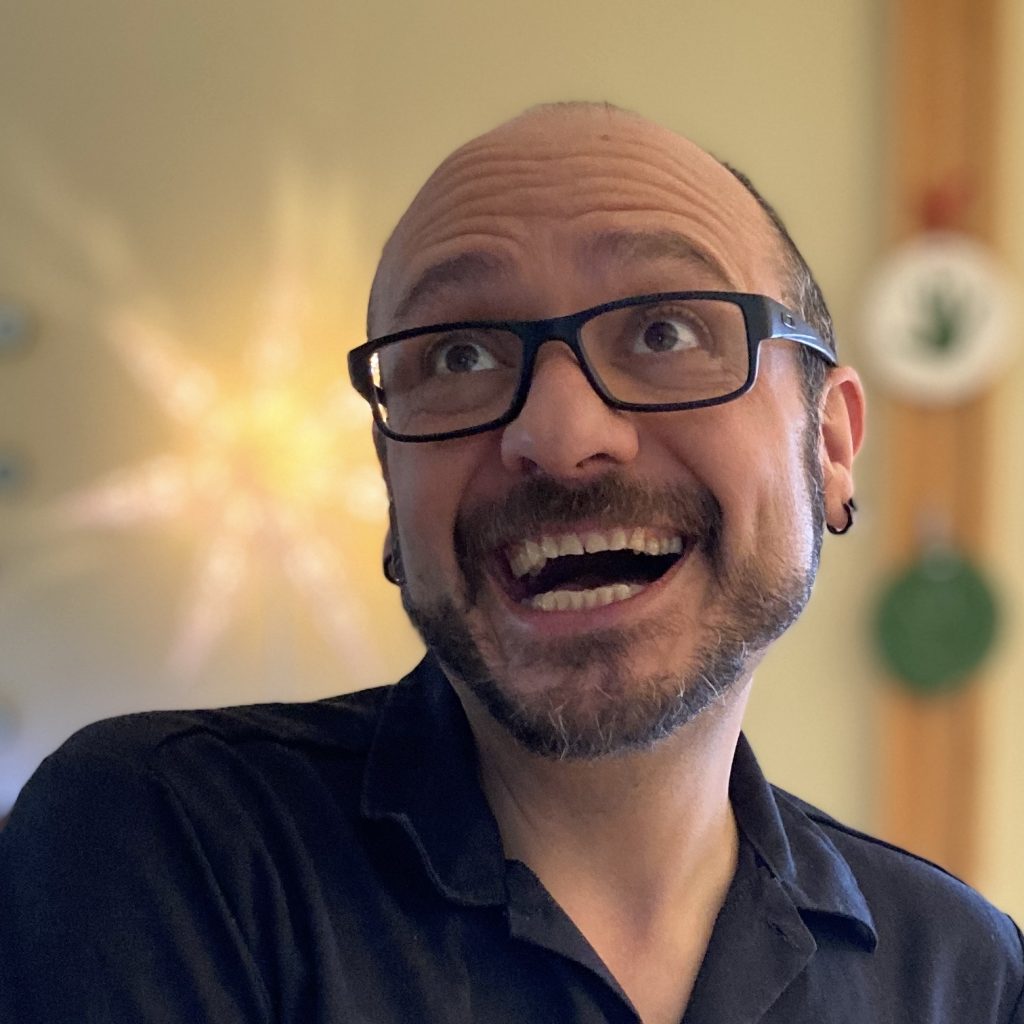
Yann Oehl in his Seattle studio
DANA DELIBOVI
When people think of AI in art, they often don’t think of fine art—they think of advertising or social media posts. How do you use AI tools to create art?
YANN OEHL
When I first tried AI in image-making, I did what most people do. I put a verbal prompt into an AI generator, just to find out what would happen. You know, “Penguin with a hat,” into Chat GPT, then see what pops out. But, after much practice, I’ve ended up using AI as form of collage. In my latest series, and the works that I’m most proud of, I play a different role in collaboration with the technology.
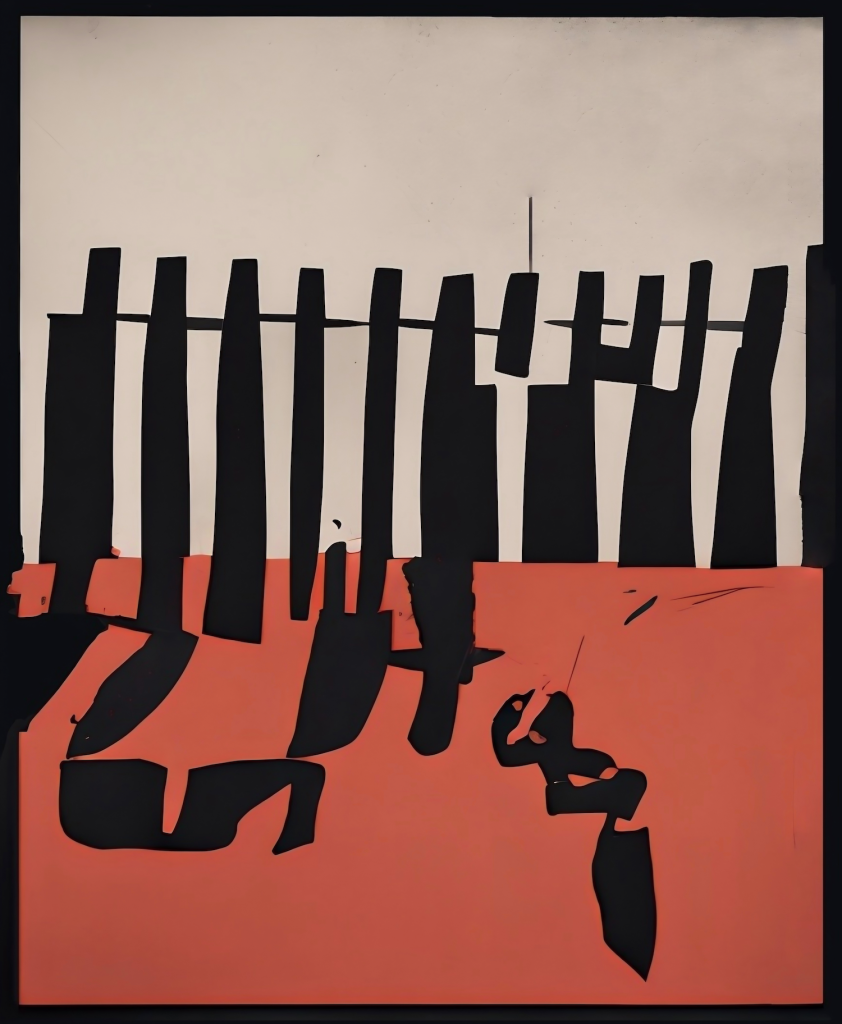
Yann Oehl, Maintaining Proper Alignment, 2024
I use AI as a way of generating elements, which I then combine. I layer multiple elements on top of one other. Or I gather the elements and re-run them through AI again, essentially to riff on the work a second time. Or sometimes I combine non-AI generated elements, things I make directly, with AI elements. AI enables me to get textures, patterns, and materials that I wouldn’t otherwise have access to.
A single AI prompt doesn’t lead me to a final piece. Instead, I do a series of related prompts, and generate maybe 30 or 40 images. Then, I’ll take sections of each of those different images and combine them in different ways. It’s that process, through many iterations, that results in a finished piece.
Let me add that everything I’m talking about here, including non-AI elements, I create digitally. I am a digital artist—100% of everything I do is digital, whether I’m working with AI, an image editor, digital painting tools, or even my iPhone’s native photo editing tools. I use non-AI software (Procreate and Pixelmator mostly) to do color editing, touch-up work, cloning from one section to another, making color adjustments, merging layers, and blending elements together.
DELIBOVI
My favorite series of yours is Letterforms. How would you make one of those?
OEHL
For Letterforms, I don’t give very concrete prompts. I input into AI the term “letterform.” The ambiguity of this term allows for more interesting results, sometimes asemic, sometimes non-Western character sets.
I may also use one or more mood words or texture words. My prompts are most often verbal at first, and I’ve also found that asking for multiples images—for instance, “show me 6 variations of X”—generally produces more interesting results. My go-to AI engines are Chat GPT, Deviant Art Dream-up, and Microsoft Designer. Each has its own flavor, flaws, and limitations.
I consciously avoid using prompts with the names of any artists, even older artists, because I don’t want anything to be consciously derivative. But I do include style prompts like “abstract expressionist” or media like “daguerreotype” or “letterpress.” I will chain all descriptive words together. From the result, I’ll modify the prompts until I get something visually that feels right. Once I’ve done that, I may upload cropped portions back into the mix and have the AI software create additional iterations.
As I move along, I’ll usually get a mix of recognizable and partial letterforms and numerals. Sometimes I hit the jackpot and can frame an existing portion of the image produced “as is.” Sometimes it takes more post-production via non-AI software to find something that resonates.
There can be a lot of randomness in this process, which I really enjoy. My prompts are kept intentionally ambiguous—setting a scene without being too prescriptive. You never know what you’re going to get. Happenstance plays a huge role in how I interact with AI.
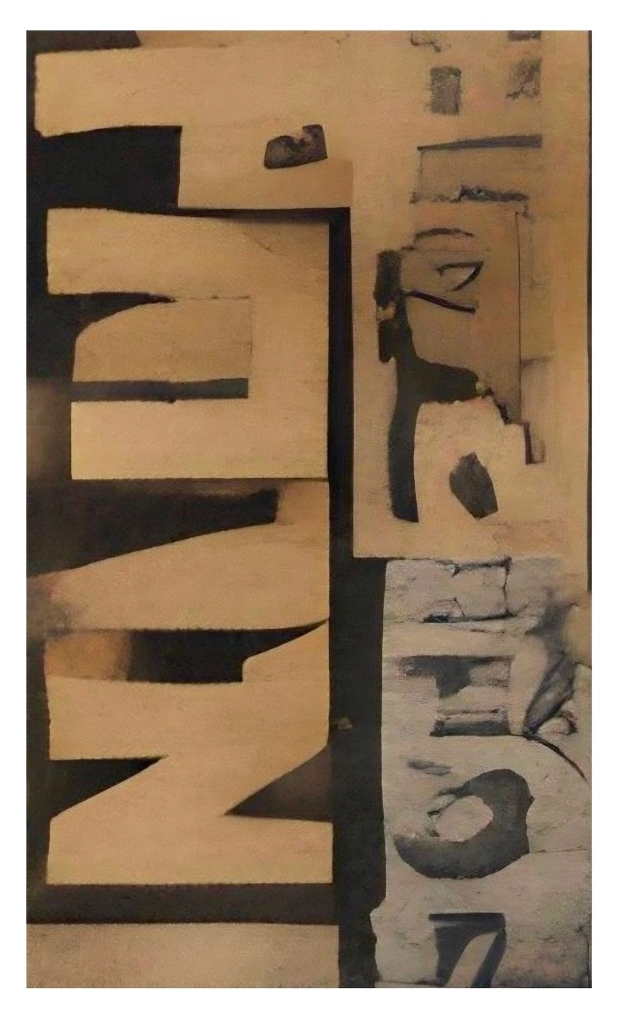
Yann Oehl, Letterforms series 3.11, Insignificant (Homage to Chillida), 2024
DELIBOVI
I use an AI line randomizer for poetry sometimes. It helps me see the poem in a new, unexpected way, to kickstart my revision. It’s the approach of the Dadaist poet Tristan Tzara, who cut up newspaper articles, scattered the pieces, and generated poems. What you do with AI reminds me of this.
OEHL
There’s a legacy of procedural work in art that uses randomness to inspire and guide. Some composers in the 18th century threw dice to determine the next precomposed sequence to add to a work. John Cage made chance-controlled music—he created Music of Changes for piano using the I Ching to generate random numbers the composer associated with various pitches, tempos, and intensities.
There’s something else, also, that’s fascinating about AI. I think it very much fits with the concept of bricolage—creation from whatever is available—which is part of postmodernist theory. AI is an engine of bricolage, and a highly granular one. It collects all the semiotic seeds of human endeavor, for the artist’s use. You’re allowed to mix and match and create with those seeds. For me, that is the most satisfying way to use AI—play, explore, retouch, reconfigure, and move around in the digital latent space. It really is like the poet cutting up text, tossing the fragments, and then pasting them together randomly, but with so much more material to play with.
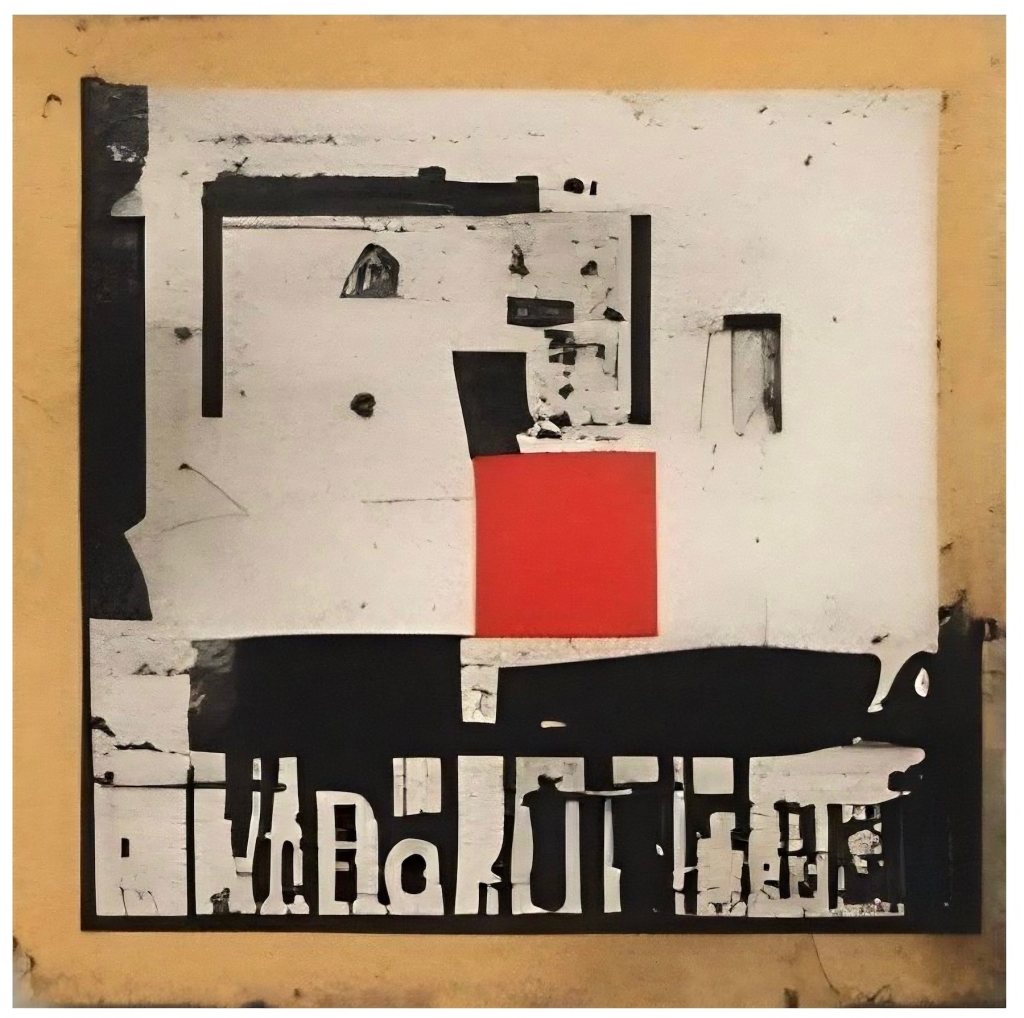
Yann Oehl, Letterforms series, Domestic Labyrinth (Interior View), 2024
With AI tools, you can reconfigure and reframe endlessly. And you can do this without losing image quality. For example, you can take a small section of something you generated that you have liked. Using AI, you can upscale it with minimal blurring or artifacting. You can give the piece depth with additional prompts on pattern and texture as you upscale; for this I use the web app “neural.love.” You can even add intentional “hallucinations”—atypical or distorted AI responses to prompts—as you scale up the size of the piece, and still maintain a high-resolution composition. Scaling up is almost always required, since most of the output from AI images float around 1024 x 1024 pixels.
One more thing that’s fascinating about AI as bricolage: the basic material of all AI art is language. Craft starts at that language level, the level of the language prompt. This is really interesting for poets: spoken and written language, spoken and written words, drive what is created. This is such a natural and powerful interface. I put together strings of words to create images—textures, tones, shapes. It feels like magic, specifically, Kabbalistic or Enochian magic, in which sacred words have the power to manifest form.
DELIBOVI
I think we have to address the pushback on AI art. The Rhode Island School of Design, where quite a few artists are embracing AI, recently did a symposium of debates in AI. Some artists at the symposium expressed opposition to AI on multiple grounds. One important criticism is that AI deskills artists, weakening their abilities to craft work of their own hands. What is your take on that criticism?
OEHL
The closest analog, not only to the functionality of AI art but also to the points of criticism, is an older art, photography. Photography users a mediator technology, the camera. The artist gives instructions to the mediator, like aperture on a traditional camera, digital selections on a digital or phone camera, prompts in AI. And photography, like AI composition, was not accepted as an art form early on. It was considered cheating because it was not the work of the hand alone.
But this pushback assumes that working with AI is not, itself, a form of craft. The representations created in AI art require their own skills at working with information, just as photography once required working with equipment and darkroom chemicals.
Did photography deskill portrait painters or did it simply create additional skills of photography? Has digital production deskilled musicians or has it created additional types of music skills? Artists who work with AI learn AI skills, in addition to any skills in the hand-crafting of art that these artists choose to master to achieve their vision.
In my opinion, in a creative endeavor, skill is a means not an end. Vision leads the tool.

Yann Oehl, Who by Water, 2025

Yann Oehl, Selective Permeability, 2025
DELIBOVI
Another criticism leveled at AI in the RISD debates was that the work of artist’s should not be “grist for the mill” of AI training. Noam Chomsky has called AI “high-tech plagiarism.” What do you think about the issue of using artists’ work without their permission or credit to train AI?
OEHL
Here’s my view. If I make a reproduction of a work of art, or work in the style of somebody else, it can be considered plagiarism. But plagiarism as a feature of the development, the training?—Not really.

Yann Oehl, Letterforms series, Exuviae, 2024
Here’s what I think happened, based on my own experiences of working in tech. People thought: We have this technology. It’s happening. So let’s do this because we know that the end product is going to be amazing. Simply the spirit of “let’s try to create, let’s show the potential of AI, and then we can work out the problems.” Once the genie was out of the out of the bottle, only then did we look at the ethics of machine learning.
I believe that it is time for us to make things right, and, ideally, to pay people whose work has been included in the original and ongoing training. Obviously, there should also be transparency—you should know your work is being used. The artist needs to be part of the process. Something like Spotify may be a model. They pay per stream of copyrighted music, and perhaps we could pay per upload copyrighted text or visual art.
But I also think the continued development of AI will always have uncredited sources, much in the way the mind does. Music is a great example. It’s so easy to riff off of somebody else’s tunes, right? The palette is small: these are the chords, the beats, the notes we have, and hitting on someone else’s combination is relatively common.
You know that, as an artist, there cannot be a separation between you and the influences of those that came before you, or your peers that exist in the same sphere. Do we call that plagiarism? We say instead that our work is inspired by the work of others.
DELIBOVI
Do you worry about the risks of using AI-generated visual images for bad ends?
OEHL
The technology absolutely has the potential to be abused in things like deepfakes and propaganda. But I think the ethics of that comes down to human intention, not the AI tools themselves. Even before AI, you could have done a deep fake—remember the old hypothetical that they faked the moon landing in a studio? Back then, as now, the cinema technologies we had were not the problem. It was how people decided to use those technologies.
AI is a powerful technology. There have been many powerful technologies and tools. Even the advent of human language gave us a powerful tool. We can use language to enlighten and to educate. We can use language to propagandize, to crush, to label, and to and to do horrible things. Is language the problem? I don’t think so. Language isn’t the problem, and technologies are not the problem. What humans choose to do with these things is the problem.
DELIBOVI
AI has a huge environmental impact. It requires a big increase in energy use. As socially conscious artists, how do we reckon with this?
OEHL
This is a really tough question. One thing we have to do as a society, I believe, is to power more and more with electricity, which is efficient and more easily adapted to renewable use than other forms. AI’s energy use is a problem, but it’s forcing us to build a better electrical infrastructure, which is a solution. An analogy is geothermal turbine energy systems, a useful renewable technology that developed from an awful one, fracking.
We Americans need to become more mindful of the energy we use and how we allot that use. If you want to use more electricity by using AI, how can you offset that? How can you change the way you power your home? Of course, we need this kind of thinking to be institutional as well. How are we, as a society, going to power what we want to have, in a way that doesn’t completely blow our carbon footprint?
In the United States, our model as a culture is just to just string it together, make it work for as long as you need to, and then, if it falls apart, it falls apart. On to the next thing. I know that at Amazon, for instance, any call to work on delivery infrastructure was frowned upon. They saw themselves as moving so fast, they needn’t take the time to plan how to get things from place to place in the future.
But I think the world as a whole is in the early stages of organizing human life differently. This is where Europe is headed: better planning for future problems, knowing and accepting the trade-offs. Unfortunately this has been politicized. It’s too bad, because we need to do it.
The bottom line is that the whole issue of energy is not just an AI issue. To say that AI is the only drain on resources is not true. An interesting thing about AI is that it could be one of the tools that allows us to create new strategies for energy optimization, such as city-wide plans for orientation of buildings, how closely they’re grouped, how air travels between them, and so on.
I believe it’s time we looked at and changed our old practices. Then, we can move forward to a world, to an economy, and to lives in art where we use AI for our benefit.
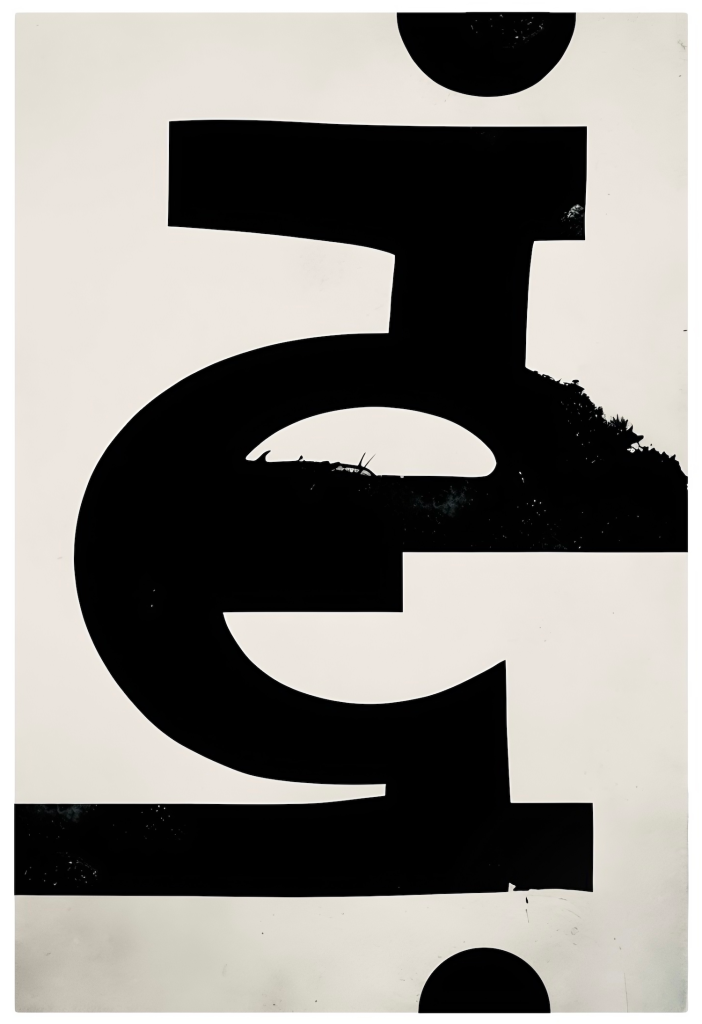
Yann Oehl, Letterforms series, id est (in other words), 2024
Click here for AI: Reflections/Work—to learn more about what artists, art schools, and museums are creating and thinking about AI in the visual arts.
To see more of Yann Oehl’s art, visit his page at Deviant Art. Follow him at @yannoehl.bsky.social, where he posts his own work, and microblogs about his favorite work by other visual artists.
* * *
